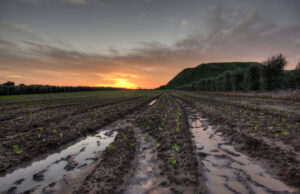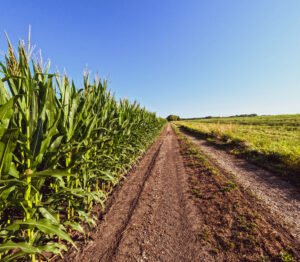by Gilly Kinsky, VP Marketing, CropX
Why sustainability teams need better visibility into field-level outcomes – and how to get it
Sustainability goals are everywhere in agriculture right now. Companies are setting climate targets, talking about regenerative sourcing, and reporting on Scope 3 emissions. But if you’re part of a sustainability team at a food or ag company, you probably know the uncomfortable truth: most of the data you need to track progress just isn’t there.
This is especially true when it comes to farms. That’s where the environmental impact happens, but it’s also where most reporting tools stop working. You might know your total fertilizer purchases or regional water risk, but you probably don’t know what’s actually happening in the soil, on a field-by-field level.
That’s not a failure. It’s a visibility problem. And it’s one the industry has been quietly struggling with for years.
Precision Ag Isn’t Just About Yield Anymore
Precision agriculture has been around for a while, mostly used by growers to make decisions about water and nutrients. But something is changing. These tools are now being used to support sustainability reporting and supply chain transparency, especially for Scope 3 emissions.
Modern systems can track how much water a specific crop used last week, where nitrogen is accumulating or leaching, or whether soil carbon levels are trending up or down. These aren’t estimates. They’re real-time measurements, based on soil sensors, satellite data, and agronomic models.
This shift matters because it gives sustainability teams something they’ve never had before: direct access to field-level data that’s clean, structured, and ready for ESG reporting.
The Field as a Source of ESG Data
Let’s take an example. If you’re trying to report reductions in Scope 3 emissions from fertilizer, the standard approach is to use broad regional estimates. But with precision ag, you can measure actual nitrogen application, timing, and movement through the soil. That means you’re reporting on what really happened, not what a model assumes.
The same is true for water. Instead of estimating based on weather or irrigation system type, you can use actual evapotranspiration data from in-field sensors. That gives you accurate numbers on how much water was used, when, and by which crop.
This kind of data is already being mapped to reporting frameworks like the GHG Protocol and SBTi. It’s also being used to verify regenerative practices like reduced tillage, cover cropping, and input efficiency.
Why Grower Trust Still Matters
You’ve probably heard this before: we can’t put more reporting pressure on growers. They’re already overloaded, and sustainability shouldn’t come at their expense.
That’s true. But here’s the shift. Precision ag doesn’t have to be about collecting data from farmers. It can be about giving them tools that make their jobs easier, tools that help them decide when to irrigate, when to fertilize, or how to respond to soil stress.
If those tools also produce structured, verifiable ESG data, then both sides benefit. The grower gets better outcomes. The company gets the data it needs. And no one’s wasting time filling out extra spreadsheets.
This kind of alignment is what makes the difference between a successful rollout and a failed pilot.
What Transparent Agriculture Actually Looks Like
Once these systems are in place, the difference is clear. You can stop estimating and start verifying. You can show year-over-year improvements. You can connect the dots between what’s happening in the field and what you’re reporting to investors, regulators, or partners.
You also avoid the risk of greenwashing. When your ESG claims are backed by sensor data and satellite imagery, they’re harder to challenge and easier to communicate.
This is the direction the industry is heading. And if you’re still relying on averages, proxies, and guesswork, now is the time to move.
Sustainability Starts With Visibility
You can’t improve what you can’t measure. And you can’t measure much if you’re flying blind at the farm level. Precision agriculture doesn’t solve everything, but it solves a big piece of the problem.
For sustainability teams who are serious about impact, and who want to report on more than just intentions, this is the moment to start connecting ESG goals to real-world outcomes, starting at the root.




